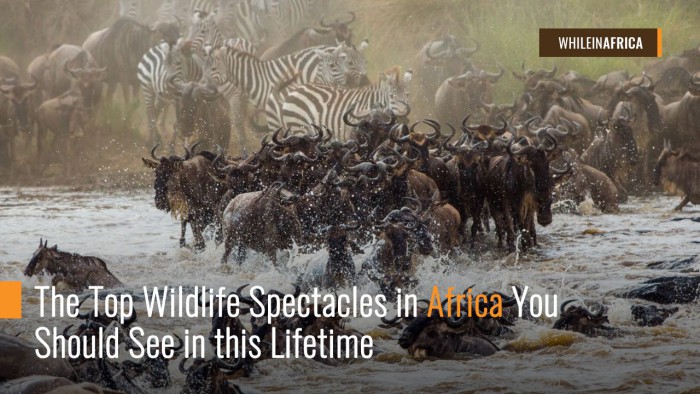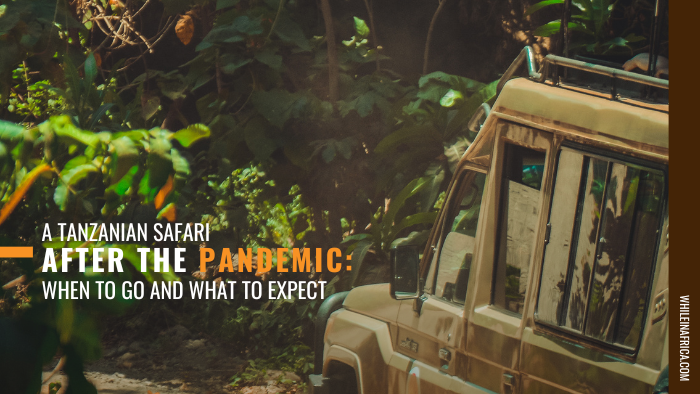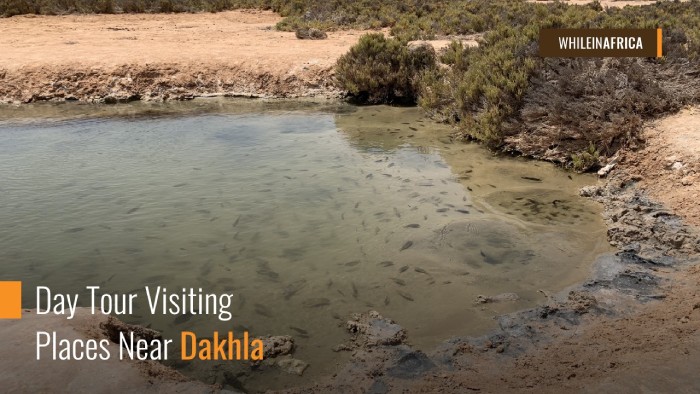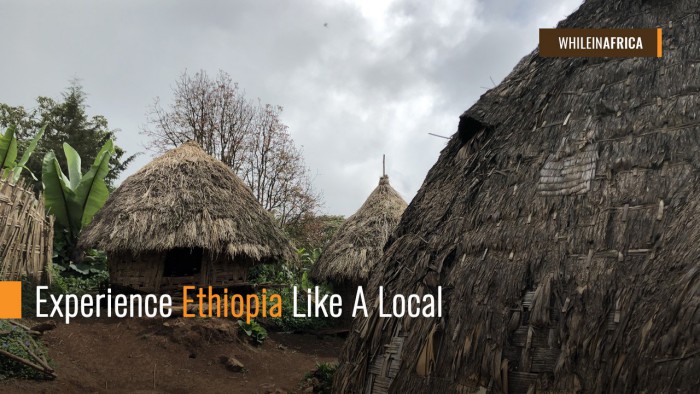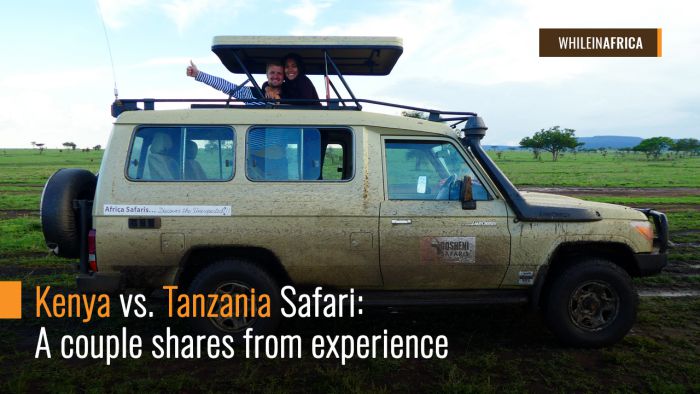The vast continent of Africa is home to the most incredible animal gatherings anywhere on the planet. You may already know about the unbelievable migration of one million wildebeest across Tanzania and Kenya. But there are many more examples across the continent that are less well known. Each one brings its astonishing tale of danger, perseverance, and magnificence. To make sure you don’t miss any, let’s take a look at some of them.
1. The Great Migration of Wildebeest, Kenya, and Tanzania
2. Lake Nakuru migration of flamingos, Kenya
3. The Sardine Run, South Africa
4. Bat migration of Kasanka National Park, Zambia
5. Migration of Southern Right Whales, South Africa
6. Turtle hatchlings at Sodwana Bay, South Africa
7. Elephant migration, Mali
The Great Migration of Wildebeest, Kenya, and Tanzania
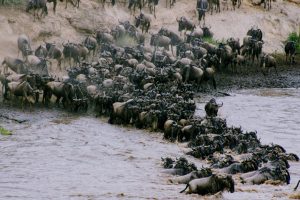
If you have only heard of one wildlife spectacle in Africa, then The Great Migration of Wildebeest will probably be it. The annual pilgrimage sees more than one million of the powerful and graceful creatures seek better grazing lands in a spectacular mass migration. Along the way, they are joined by hundreds of thousands of zebra and gazelle. The animals’ incredible journey takes them on a clockwise rotation across northern Tanzania and Kenya, through the Serengeti and Masai Mara lands.
The annual journey, as shown in this great migration map, typically begins around April when the herds set off from the Serengeti on a hunt for more water and grass. From there, they normally arrive in Kenya’s Masai Mara around July. After that, it’s another epic journey back to the southern Serengeti for the winter season. Despite gathering in such huge numbers, the animals’ odyssey is fraught with danger. The massive collection of herbivores attracts an abundance of hungry predators looking for an easy meal. Big cats and hyenas both prowl the edges of the migrating beasts, looking for weaker prey to pick off. Perhaps the most terrifying moment of all for the herds, however, is the hazardous crossing of the Grumeti River. Lurking under the muddy waters are huge Nile crocodiles looking to drag the helpless beasts into the depths below.
Lake Nakuru migration of flamingos, Kenya
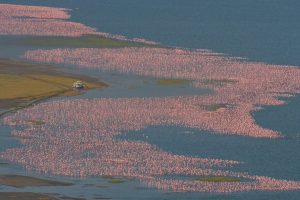
At first glance, you could be forgiven for thinking you had slipped into a wonderful dream. As you gaze across the huge Lake Nakuru in Kenya you witness a sight, unlike anything you have seen before. Hundreds of thousands of long-legged and long-necked pink birds gathering elegantly around the water’s edge. But what you are seeing is not a dream, of course, but the great migration of flamingos — a natural phenomenon worth your bucket list. The spectacular annual event sees around 300,000 of the extraordinary birds flock to the area to take advantage of the water’s magical properties. The alkaline-saline lake hits a pH level of 10.5 — a perfect environment for the proliferation of algae which the birds love to eat. While the sheer number of birds sounds incredible, it was a lot more just a few years ago. The Rift Valley lake once attracted around two million lesser flamingos. That number has been gradually declining due to rising water levels that reduce the salinity and algae in the water. Although many of the birds have started to look elsewhere for their feast the spectacle is still a sight to behold.
The Sardine Run, South Africa
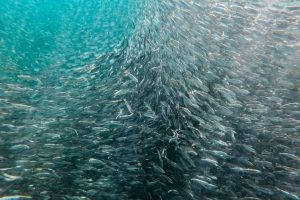
When things get treacherous we all feel safer with friends beside us. And it seems the sardines of South Africa have taken this idea to heart. The Sardine Run sees millions of the fish come together from May to July for a journey up the country’s Eastern Cape. The numbers are mind-boggling. Shoals can reportedly reach 7km long, 1.5km wide and 30 meters deep. But their expedition is one of astonishing danger.
The huge gathering, which is the largest biomass migration on the planet, catches the attention of the oceans’ most notorious predators. Dolphins, sharks, and whales rise from the depths to strike from below. The sardines work in tandem, darting in a glittering mass to throw off their attackers. However, aerial assaults come from seabirds, making escape almost impossible. What results is a spectacular bloodbath in which thousands of sardines are eaten by the predators. So why do they take this dangerous annual gauntlet? Well, the strange thing is that we aren’t 100% sure. Several different theories are circulating but perhaps the most credible is the sardines head north to reproduce. However, without more scientific investigation, the incredible journey remains a mystery.
Bat migration of Kasanka National Park, Zambia
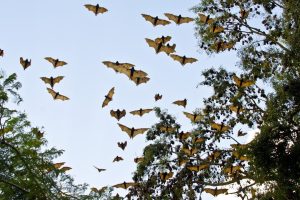
Bats enjoy a less-than-favorable reputation — perhaps because of their undeserved association with vampires. But, no matter what your feelings on the critters are, the Kasanka bat migration is a wildlife event that cannot be missed. The remarkable annual event sees around 10 million straw-colored fruit bats flock to Kasanka National Park in northern Zambia.
The beautiful creatures head to the area for only a month and a half, from late October to mid-December, to gorge on the ripe fruit in the area. During the day, the visitors take up every inch of space by hanging off the surrounding trees. When the sun sets, they head off for their feast creating a dark blanket across the sky. For those with a fear of the winged creatures, you’ll be glad to hear these specific bats only eat fruit (with no interest in sucking blood). However, that doesn’t mean the sight of them is any less impressive. The huge creatures, often called Flying Foxes, can have wingspans just under a meter in length and will collectively eat 5,000 tons of fruit a night.
Migration of Southern Right Whales, South Africa
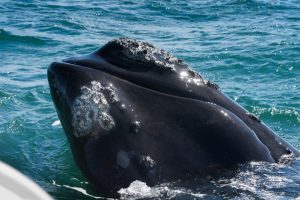
When we think of Africa’s greatest wildlife spectacles, our minds automatically leap to giant land mammals making their way across the continent. But off the coast of South Africa is an annual aquatic adventure to rival any event on the plains. Between June and October, Southern Right Whales congregate just off the Western Cape for the important calving and mating season. Their journey has taken them thousands of miles from the cold waters of Antarctica to the very base of Africa. Although they’ve come for serious business, the highly intelligent creatures spend much of their time playing and interacting with each other. What makes the event so spectacular is the sheer size of the animals. Southern Right Whales are around 5.5m long when they’re born and can reach up to 18 meters in length. What’s more, a full-grown adult can weigh an incredible 80 tonnes. One of the best places to see the spectacle is the Hermanus area, where more than 100 whales gather each year. The whales often come close to the shore that they can be seen from the land.
Turtle hatchlings at Sodwana Bay, South Africa
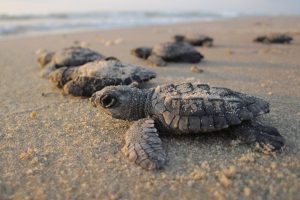
While many of Africa’s greatest wildlife spectacles come in the form of gigantic beasts making epic journeys, sometimes the little journeys are just as inspiring. Each year, starting around November, huge female loggerhead and leatherback turtles emerge from the seas in search of a place to give birth. After they’ve found a spot they like, the exhausting digging begins with the mums needing enough room to hide 80 to 100 eggs. Once they’ve finished, they have to drag themselves back into the sea and off to freedom.
Although the sight is enough to bring even the hardest heart to tears, the spectacle does not end there. Around 70 days later, the turtle hatchlings are ready to make their way into the world.
Forced to fend for themselves, the babies must first crack through their eggs, then crawl through the sand before dashing for the open waters. The truly awe-inspiring event is a lesson in determination and perseverance for anyone who witnesses it.
Elephant migration, Mali
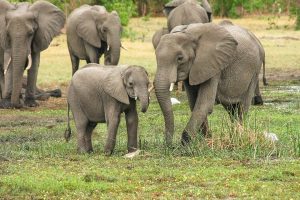
The lands near Timbuktu can be brutal. Located on the southern edge of the Sahara, the temperatures regularly exceed 40 °C (104 °F) and rainfall is non-existent from around October to March. Living in the desert lands can be almost impossible for many animals. It may be surprising to hear, therefore, that an animal as large and magnificent as the African elephant can survive (and thrive) in its harsh conditions. However, these gorgeous creatures have made the place home and go on one of the most spectacular migrations anywhere on the planet. In search of food and water, the giants march in single file around a 32,000km2 area from the Niger River in the north to southern Burkina Faso and Mali border. Their incredible journey is believed to be the longest migration of any elephant on the planet. Despite being such unique and remarkable creatures, the 300 or so desert elephants are under constant threat from extinction due to war and poaching. However, it’s hoped that new conservation efforts will keep this spectacle alive for generations to come.
Africa truly does have it all
When we think of Africa many of our first thoughts will be of safari. Perhaps more specifically we think of the Big Five: the lion, leopard, elephant, buffalo, and rhino. But the continent truly is a land as diverse as it is large. From the great ocean giants to vast flocks of pink flamingos, Africa truly does have it all. If you are lucky enough to come to the continent, make sure to catch one of these incredible events. It will stay with you forever.

